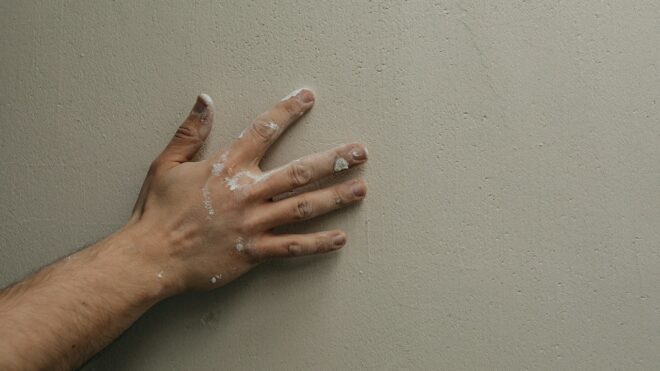When it comes to transforming your Sarasota home’s interior, a striking and unique effect can be achieved through the creative use of textured wall painting techniques. Textured finishes add depth, character, and visual interest to your space, creating a dynamic atmosphere that goes beyond the traditional flat or glossy paint. As experienced professionals in the painting industry, we pride ourselves on staying up-to-date on the latest trends, techniques, and options available to our clients, enabling them to make informed decisions that reflect their personal style and needs.
Dive into the fascinating world of textured wall painting techniques and unleash your creativity to enhance your interior space with unmatched depth, character, and ambiance.
Rag Rolling: Capturing the Essence of Old World Charm
One popular textured painting technique is rag rolling, a faux painting method that involves the use of a cloth or rag to create a distinctive and multi-dimensional finish on walls:
1. The Process: The technique begins by applying a base coat of paint followed by a contrasting glaze color. The glaze is applied using a rag rolled across the surface, either removing or applying the glaze in a random pattern to create a unique texture.
2. Effects: Rag rolling adds depth and visual intrigue while also providing an appealing old-world charm. The distinctive patterns created by this method can mimic the look of vintage fabric or aged plaster.
3. Versatility: The rag rolling technique can be customized to suit different preferences, from subtle tonal variations to bold and dramatic contrasts.
Sponging: Embracing the Art of Organic Textures
Sponging is another versatile and accessible textured painting technique, which employs the use of a sponge to apply or remove paint and create a natural, organic texture on walls:
1. The Process: Much like rag rolling, sponging begins with the application of a base coat of paint. A contrasting paint color or glaze is then applied with a sponge in a stippling motion, dabbing it onto the surface to create the desired pattern and texture.
2. Effects: Sponging provides a sense of movement and dimension with an organic texture that often resembles natural stone or stucco.
3. Customization: By adjusting the sponge’s size, shape, and texture, as well as the paint colors and application pressure, you can create a wide array of effects tailored to your personal style.
Strié: Creating Elegant, Subtle Stripes with Finesse
For those seeking a more refined and understated textured look, strié is an excellent option. This technique creates an elegant, linear pattern reminiscent of fine fabric:
1. The Process: Strié involves applying a base coat of paint followed by a layer of glaze. Before the glaze dries, a wide brush or a specialized tool is dragged vertically or horizontally across the surface, creating subtle, linear striations.
2. Effects: The strié technique produces a soft, sophisticated striped pattern that adds subtle depth and elegance to any interior space.
3. Room Considerations: Strié works particularly well in areas such as dining rooms, living rooms, and bedrooms, where a touch of understated luxury is desired.
Venetian Plaster: Epitomizing the Majesty of Polished Marble and Stone
For those looking to make a bold, luxurious statement, Venetian plaster is an iconic and timeless choice, creating the striking appearance of polished marble or stone:
1. The Process: Venetian plaster involves the application of multiple layers of a specialized plaster mixture, which contains lime and marble dust. Each layer is applied using a trowel and then burnished to create a smooth, glossy surface that accentuates the natural depth and variation in the material.
2. Effects: The resulting finish is a stunning blend of polished marble and aged patina, offering a rich, opulent ambiance and extraordinary depth.
3. Placement: Typically used as a feature wall or in smaller rooms, Venetian plaster provides a visually impactful statement that can transform any space into a luxurious retreat.
Stippling: Introducing Soft, Delicate Speckles for a Refined Finish
Stippling is a textured painting technique that introduces a soft, speckled effect to your walls, offering a refined and sophisticated finish suitable for various interior styles:
1. The Process: Stippling begins with a base coat of paint, over which a glaze or second paint color is applied. A stippling brush or sponge is then gently patted onto the wet surface to create a series of delicate, fine dots. This technique requires a steady hand and attention to detail to achieve a consistent and pleasing texture.
2. Effects: The stippling technique results in a subtle, speckled finish that can add a gentle texture and depth to walls without overwhelming the space. It creates a nuanced effect that can mimic the appearance of fine textiles or gently weathered surfaces.
3. Customization: By varying the density and size of the stipples, as well as the color combinations used, you can tailor the effect to suit different rooms and aesthetic preferences. This versatility makes stippling suitable for both modern and traditional interiors.
Brushed Pearl: Bringing a Luminous Sheen to Your Interior
Brushed pearl is an elegant textured painting technique that imbues walls with a soft, pearlescent glow, adding a touch of luxury and sophistication to your home:
1. The Process: This technique involves applying a base coat of paint, followed by a layer of pearlescent glaze. Using a brush or roller, the glaze is applied in a crisscross pattern to create a shimmering, luminous effect. The key to achieving the desired look is in the careful blending and layering of the glaze.
2. Effects: The brushed pearl technique produces a soft, reflective surface that catches the light beautifully, creating a sense of movement and elegance. The subtle sheen can add a refined touch to any room, making it feel more spacious and airy.
3. Ideal Spaces: Brushed pearl works exceptionally well in rooms where you want to create a light, sophisticated atmosphere, such as living rooms, dining rooms, and master bedrooms. The technique can also be used to highlight architectural features or create accent walls that draw the eye.
Conclusion
With a plethora of textured wall painting techniques available, you can effortlessly enhance your Sarasota home’s interior, creating a captivating space that reflects your unique taste and style. Whether you prefer the charming patterns of rag rolling, the organic textures of sponging, the subtle elegance of strié, or the grand majesty of Venetian plaster, there are endless options to bring your design vision to life.
Enlist the residential painting expertise of Braendel Painting, Inc. to achieve the desired effect and ensure a remarkable outcome. Reach out to our talented team today to discuss your textured wall painting aspirations, and let us help you transform your Sarasota home into a beautifully textured, vibrant, and inviting sanctuary.

